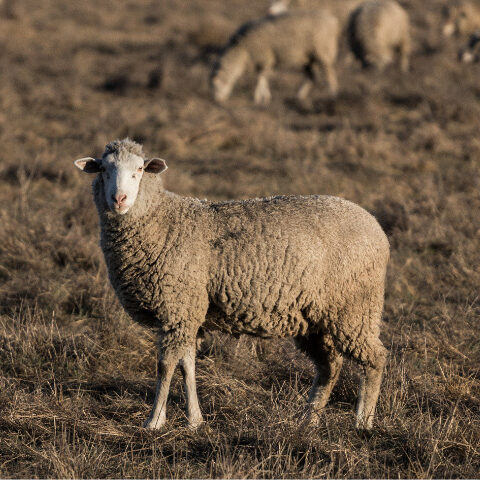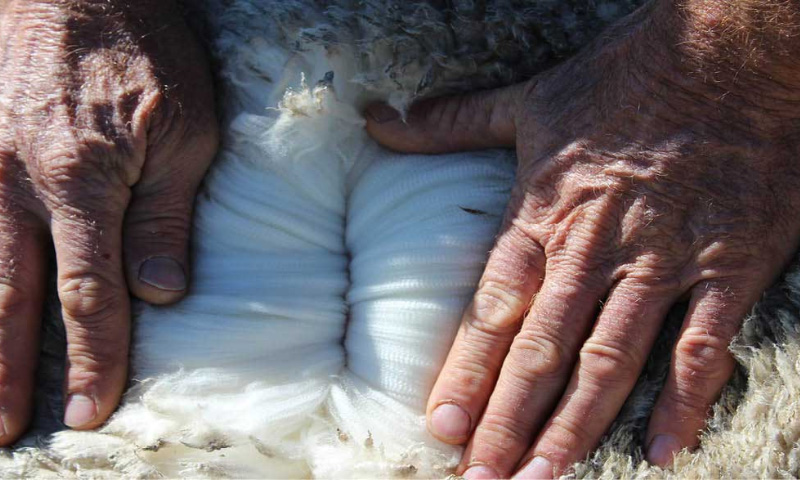Australia is one of the largest producers of wool in the world with around 25 % of greasy wool sold on the world market coming from our Country. Annual wool production is largely influenced by environmental and economic factors and with the ongoing drought and COVID-19 outbreak affecting markets, our Agricultural industry is doing it tough. However, Australia is well known for producing high-quality wool and is regarded as among the world’s best. The quality and quantity of wool produced is an important determiner of income received by wool producers and the following article focuses on how appropriate nutrient intake and, in particular, mineral nutrition can help wool production.
Wool is a natural fibre that is composed of the complex protein keratin, which contains about 20 amino acids with a sulphur content varying from 2.7-5.4% of fibre weight (Sahoo A, 2011). For sheep to grow a high yielding, high quality fleece they must receive all of their requirements for energy, protein, fat, minerals and vitamins. When the animal is receiving a high plane of nutrition both the quantity and quality (length, diameter, protein composition and strength) of the wool fibre increases. Dove (2020) explains that given the high rate of cell division and protein synthesis in the wool follicle, there is a high sensitivity of the follicle processes and fibre growth to changes in the supply of energy, protein, lipids, minerals and vitamins.
The number one most limiting nutrient is energy and ensuring that calorie requirements are being met should be the number one priority. Restricted energy consumption can result in weight loss, reduced growth rate, reduced fertility, lowered milk production and it causes wool growth to slow, fibre diameter is impacted and breaks in the wool fibre or weak spots can occur. As the plane of nutrition increases and the sheep gain in weight wool production increases. Conversely, prolonged energy deficiency will eventually result in death.
Due to wool fibres consisting predominantly of the protein keratin which is comprised of a high content of the sulphur-containing amino acid cystine, quality wool production relies on a good supply of amino acids cysteine, cystine and methionine. It is reported by Dove (2020) that diets containing protein sources which are not only rich in sulphur and other essential amino acids, but also resistant to rumen degradation, would produce a greater wool growth response.
Adequate mineral supply in the diet is crucial for wool growth as deficiencies can reduce feed intake, alter rumen function and therefore the supply of nutrients flowing from the rumen and a deficiency in particularly of zinc, copper, selenium, iodine or cobalt can directly disrupt metabolism.
The macro mineral sulphur plays an important role in wool production. In sulphur deficient diets, supplementation improves performance by enhancing bacterial protein synthesis in the rumen and improving the amino acid balance (Morrison, 1990).

The sulphur requirements are different between animal species and sheep especially have a high requirement for the mineral as wool contains 4% sulphur. Because of the additional need of sulphur for the synthesis of wool, sheep have higher requirement per kg of body weight than that of cattle. Other factors that affect sulphur requirements are age, physiological state and the nitrogen and sulphur source.
Ruminants can obtain sulphur from both organic and inorganic sources and when they are being fed high levels of non-protein nitrogen (e.g. urea) addition sulphur is essential. It has been realised that the amount of sulphur present in the diet may be the limiting factor for the synthesis of cysteine, cystine and methionine in the rumen. Under these conditions, the addition of sulphur to urea-containing rations is beneficial (McDonald, 2011).
A considerable amount of work has been done showing that increased dietary sulphur leads to increased meat, wool and milk production. There have been numerous reports of increases in both wool and meat production in sheep related to the increase of the dietary intake of sulphur. Higher wool clips, improved wool strength, increased body weight gain and higher lamb survival rates were reported in (Tisdale, 1977).
In a review of scientific research undertaken by India’s Central Sheep and Wool Research Institute’s Principal Scientist Dr. A Sahoo (2011) reported these responses to sulphur supplementation in sheep:
- Lambs given 5.9 g/day of potassium sulphate produced 6.6% more wool than lambs not receiving sulphate.
- Supplementation of 0.25% sulphur as sodium sulphate produced 17% more wool than un-supplemented sheep. In that study body weight gain and wool strength also increased.
- Studies on sulphur supplementation as sodium sulphate at graded levels (0.04, 0.13, 0.21 and 0.32%) in Chokla rams resulted higher wool yield at 0.21%.
In another study with Chokla rams, sulphur supplementation at 0.3% in the concentrate containing 19.6% crude protein improved digestibility of nutrients, immune status and resulted in higher wool production with lower hetero, hairy and medullation % in the wool fibre. (Medullated fibres are course and hollow and cause serious problems in the dying process. Hetero fibres are partially medullated and hairy fibres are completely medullated.)
Significant production benefits can be achieved by providing stock with supplementary sulphur in times of green feed and transitioning seasons. Sulphur supplementation can be particularly beneficial when stock are grazing rapidly growing grasses, cereals on sandy or acid soils, forage sorghum and sudan grasses. However, feeding straight sulphur or adding it to a feed ration yourself, comes with an element of risk. Excessive consumption can result in sulphur toxicity and secondary conditions like Polioencephalomalacia (PEM). AgSolutions have developed a number of scientifically formulated supplements that provide high levels of sulphur along with broad spectrum macro and trace minerals. Ask for these products at your preferred rural store:
Lick Blocks
- MegaMin Extra Sulphur – provides broad spectrum macro and trace minerals as well as 12% sulphur in a convenient block.
Loose Supplements
- MegaMin Extra Sulphur – provides broad spectrum macro and trace minerals as well as 8% sulphur.
- MegaMin SulPhos – provides broad spectrum macro and trace minerals as well as 8% sulphur and 4% phosphorus. Ideal for stock grazing phosphorus and sulphur deficient country or have greater requirements for these minerals.
- MegaMin SulPhos Sweet – provides broad spectrum macro and trace minerals as well as 8% sulphur and 4% phosphorus. This product contains 10% protected protein meal to aid palatability to achieve appropriate intake.
- MegaMin USDA/NOP Extra Sulphur Blend – provides broad spectrum macro and trace minerals as well as 10.2% sulphur and is compliant with USDA National Organic Program (NOP).
- MegaMin USDA/NOP Extra Sulphur Blend + 10% Protein Meal – provides broad spectrum macro and trace minerals as well as 10.5% sulphur plus 10% protein meal to assist intake and is compliant with USDA National Organic Program (NOP).
For more information on the MegaMin Extra Sulphur range or to find a stockist, please contact AgSolutions or call Head Office on 1800 81 57 57.
